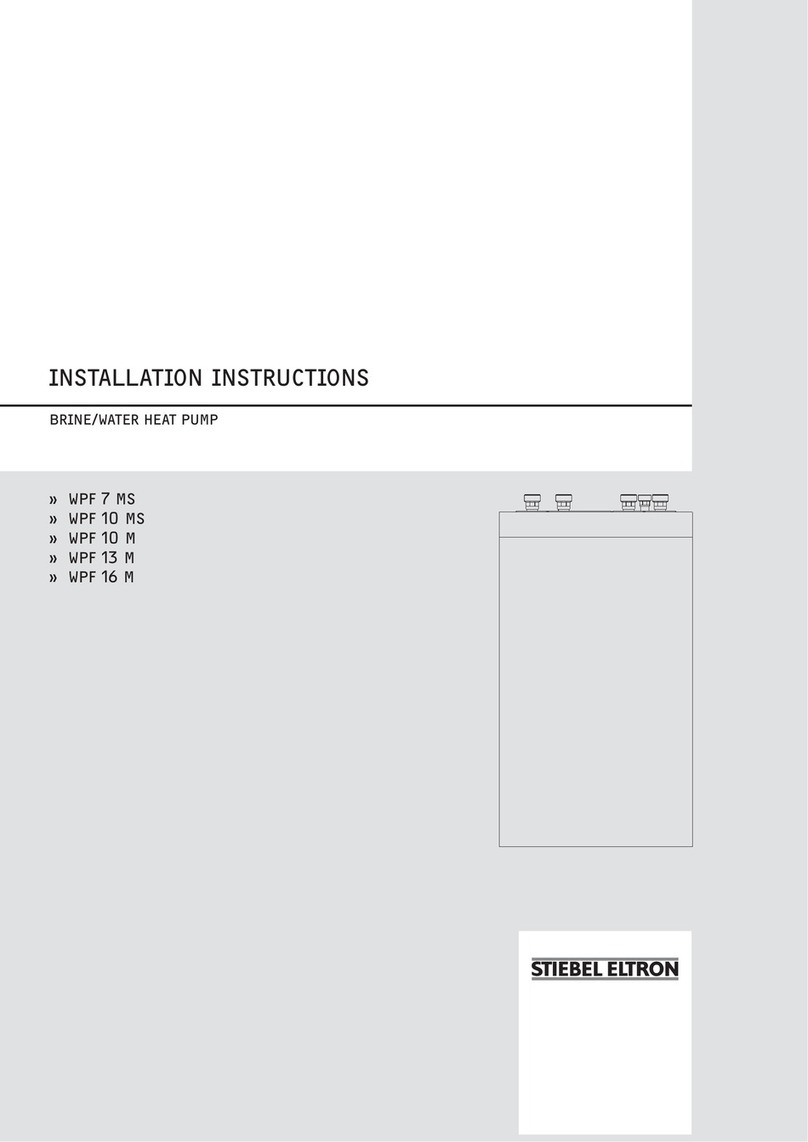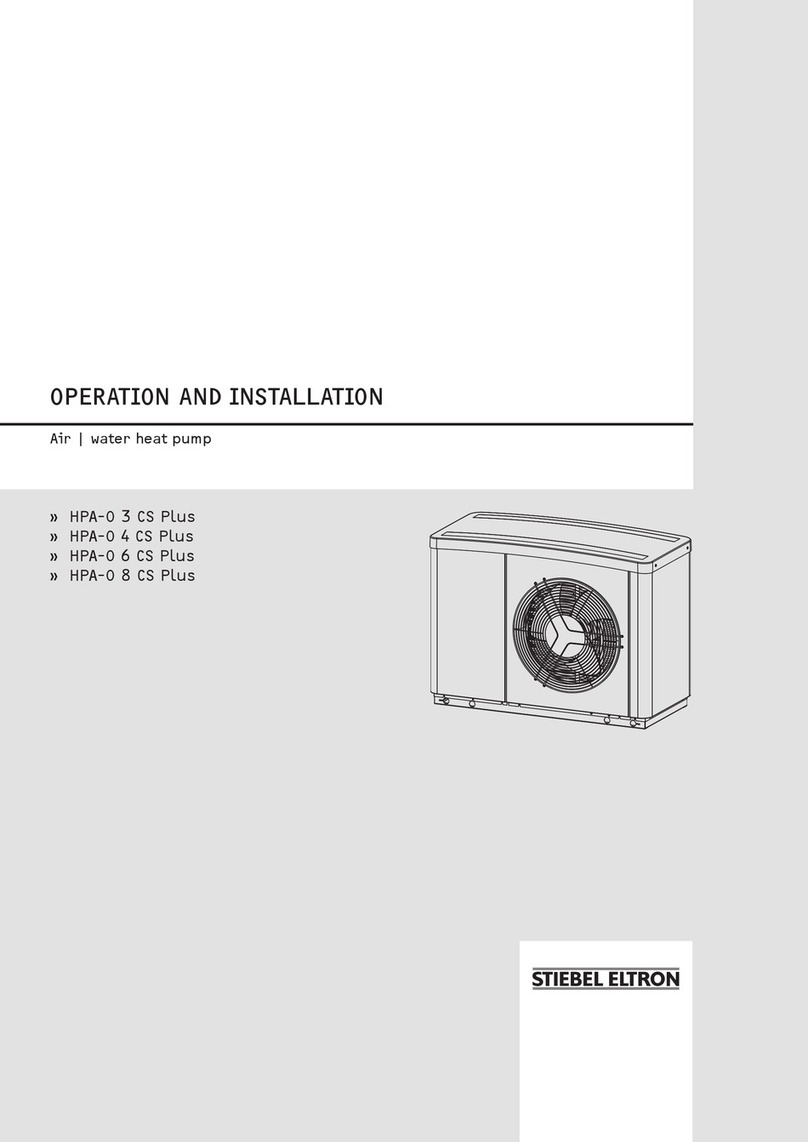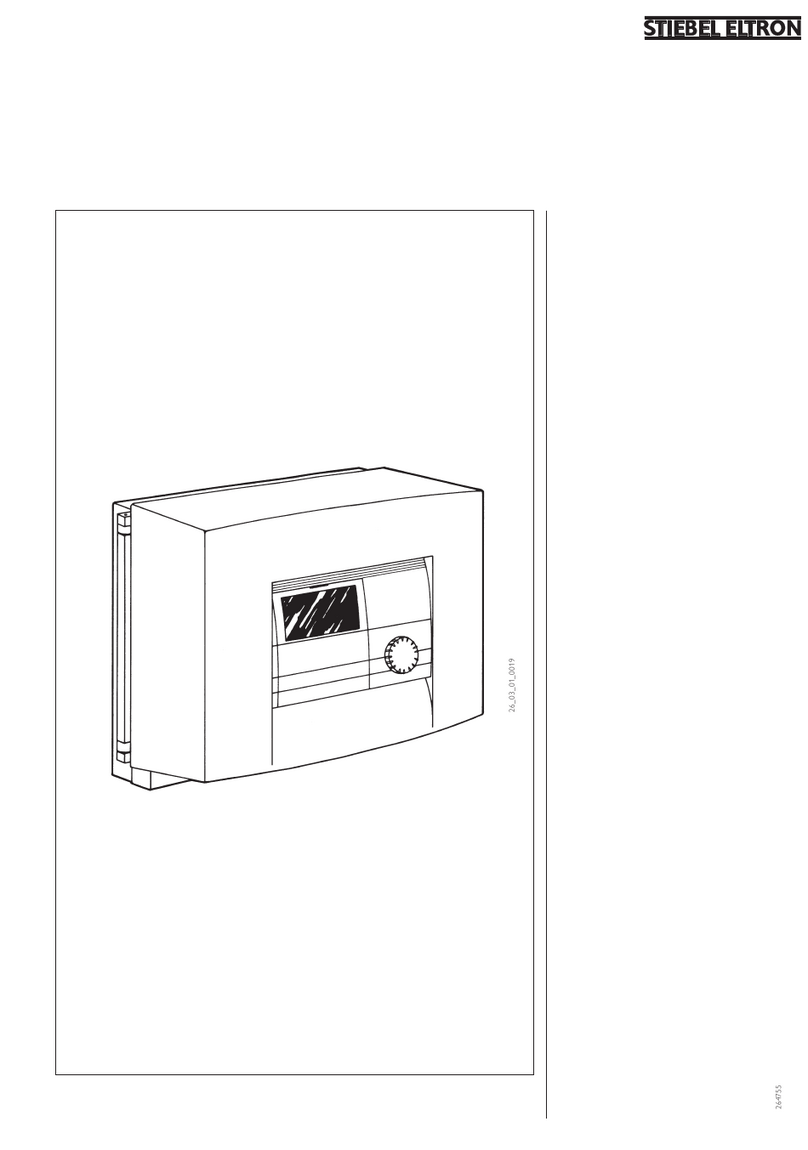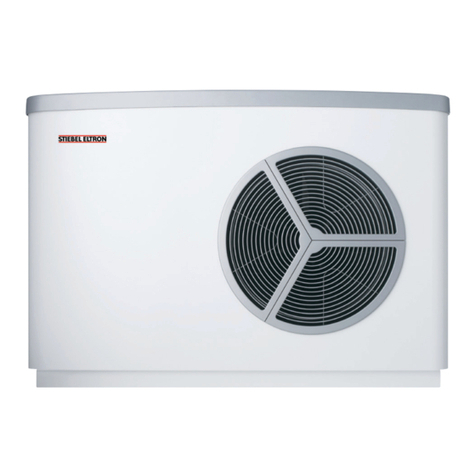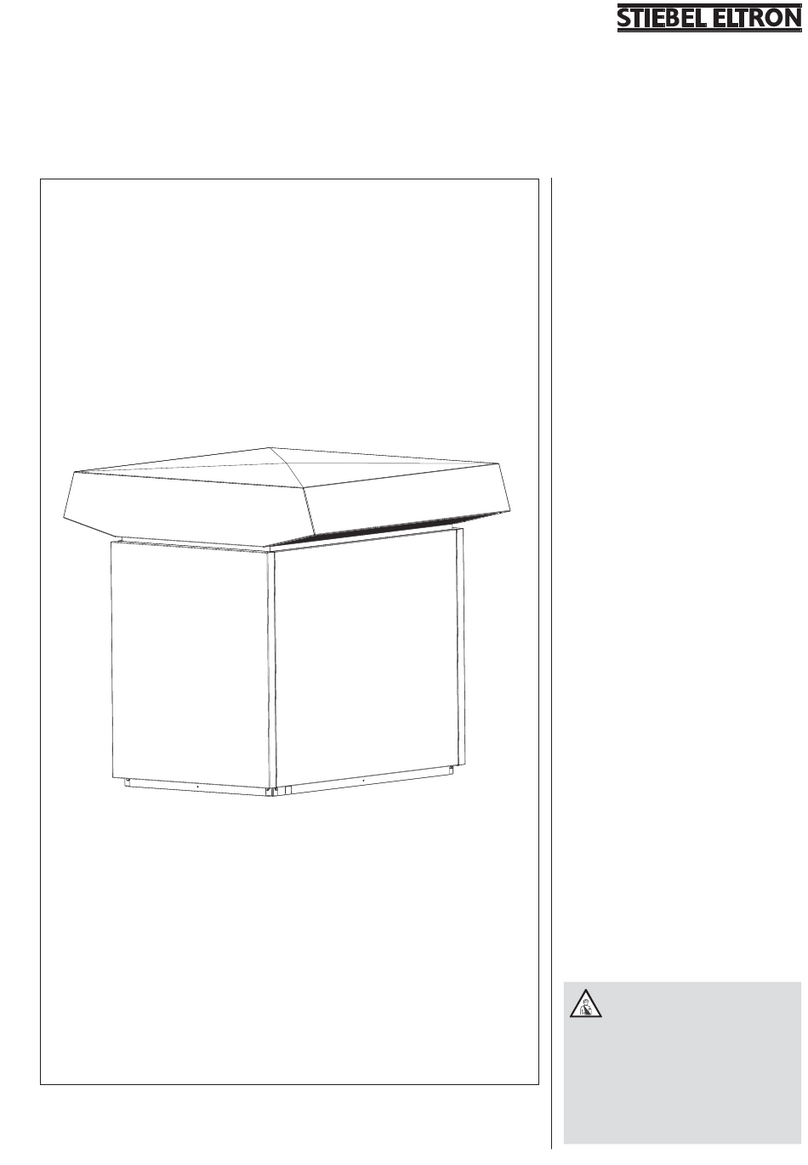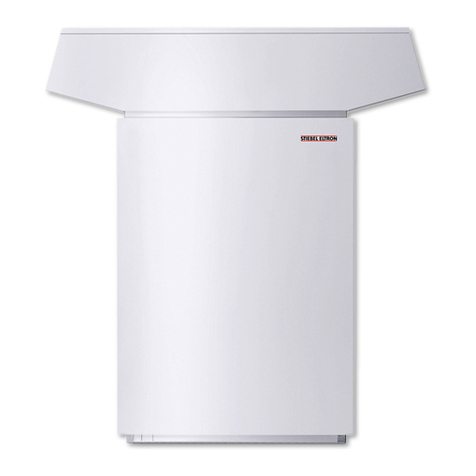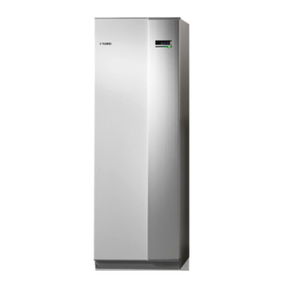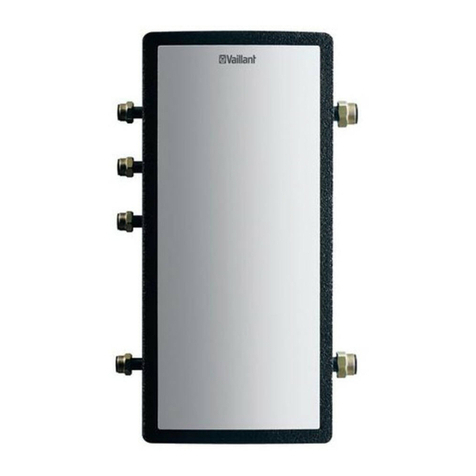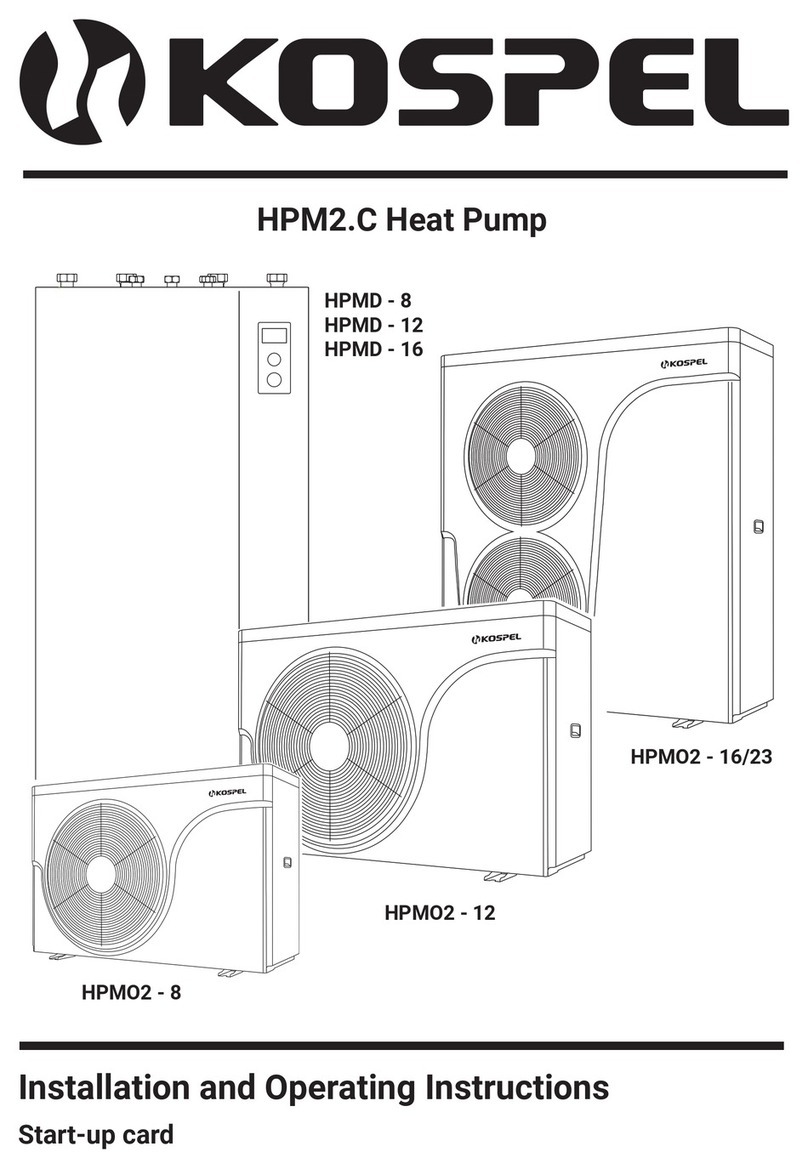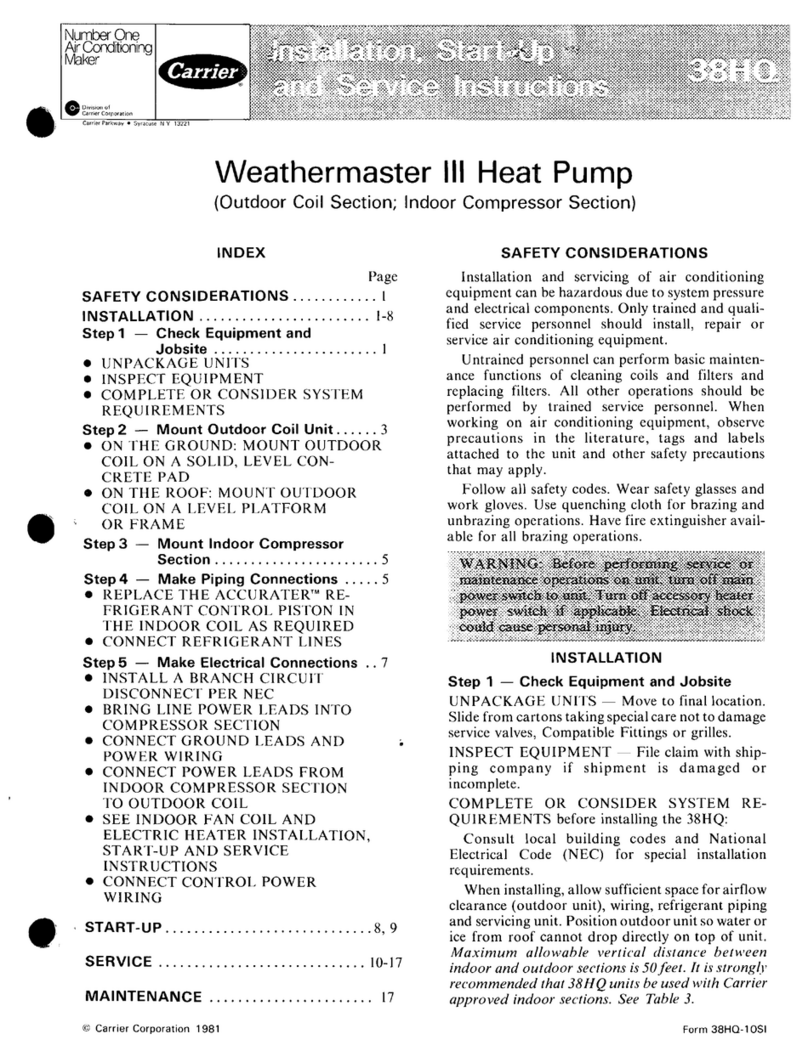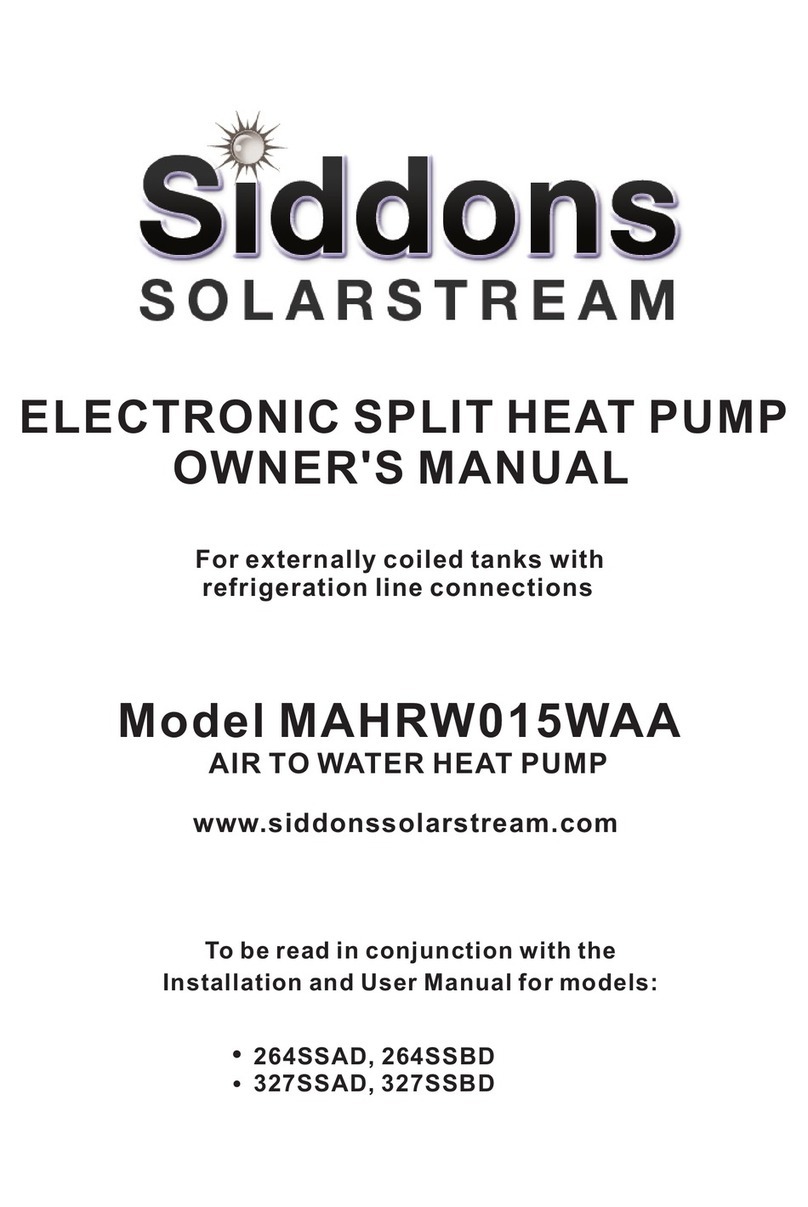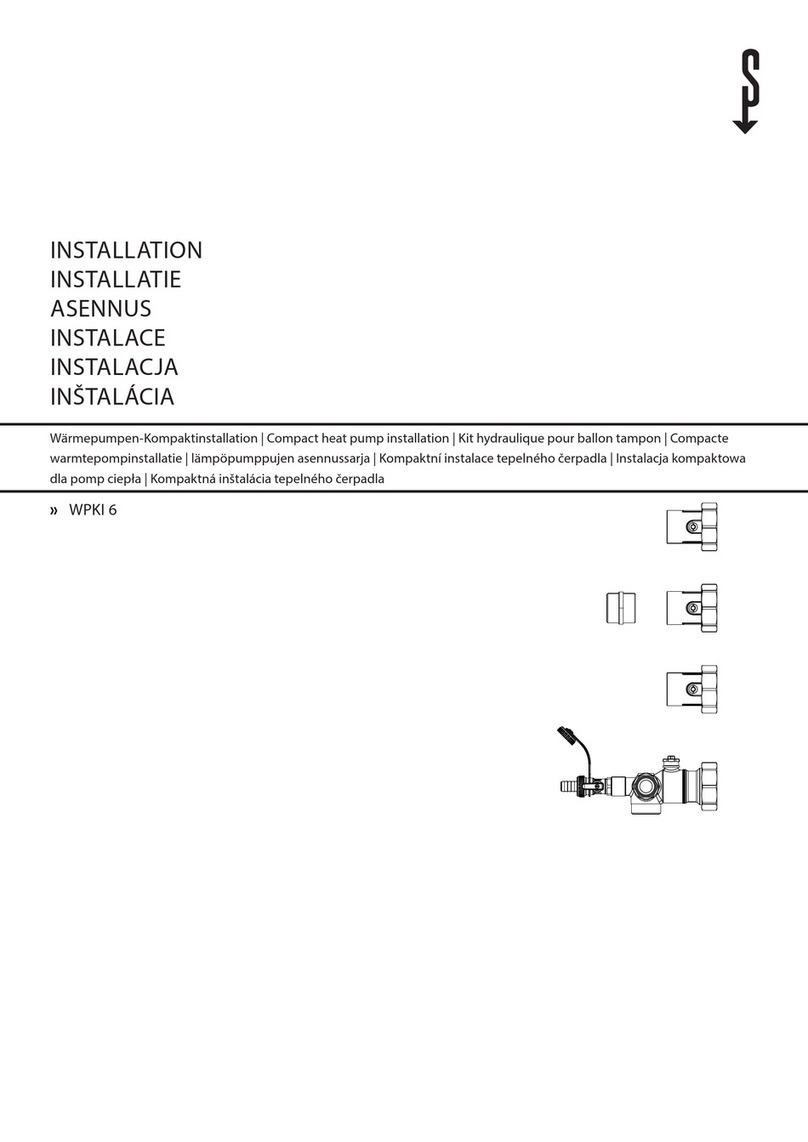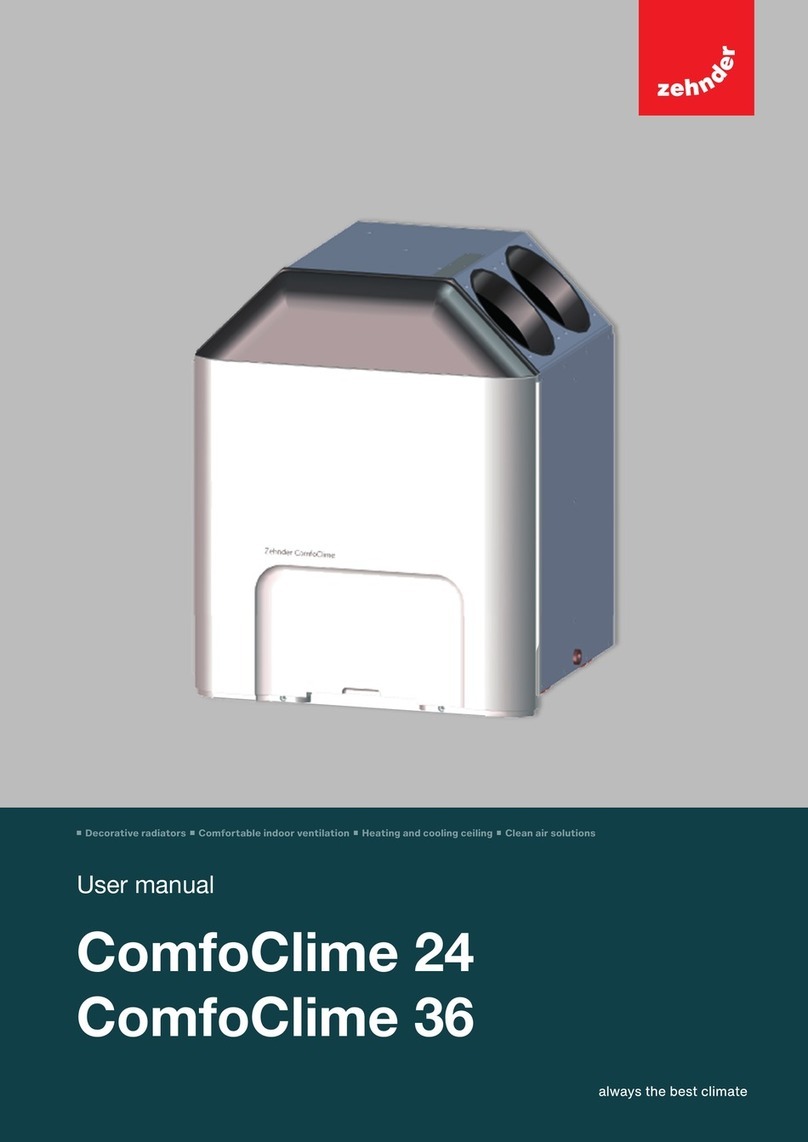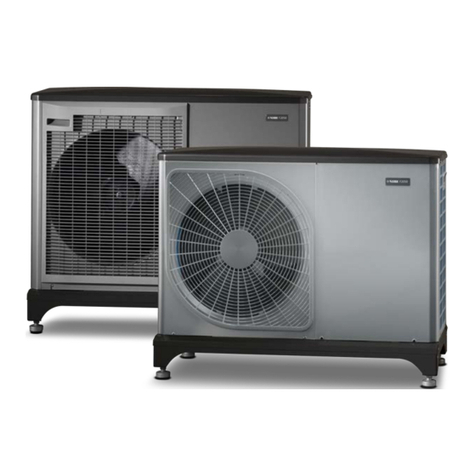9
2.6 Safety equipment and
maintenance
Only qualified contractors must carry out
the installation in accordance with these
instructions.
On the equipment
In case of a fault, the safety equipment
of the WWK 300 interrupts the relevant
power circuit.
!Please note: Before any work on
the equipment, disconnect all
poles from the mains.
High limit safety cut-out (STB) electric
booster heater
Equipment with electric booster heater
is stopped if the DHW temperature
exceeds95°C.
When the source of the fault has been
removed, reset the high limit safety cut-
out by pressing the reset button (Fig. 3
and 4, pos.10).
The heat pump top cover should be
opened for access to this device as shown
in Fig.3 and Fig.4.
Safety high pressure limiter (SDBK)
The safety high pressure limiter shuts
down the compressor, if the pressure
inside the refrigerant circuit exceeds the
permissible maximum value. The safety
high pressure limiter may also respond,
if the appliance is operated above its
permissible limit (>42°C air temperature)
or the control thermostat of the heat
pump fails to respond. Reset the high
pressure limit safety cut-out by pressing
the reset button (Fig.3 and 4, pos.14),
after the cause of the fault has been
removed.
Protective motor thermoswitch
The protective motor switch will shut
down the compressor, if it is overloaded
because of excessive thermal load.
Remove the relevant fault. After a
short cool-down phase, the protective
motor switch restarts the compressor
automatically.
Protective anode
An anode for the protection of the DHW
cylinder is inserted centrally from the top
into the DHW ccylinder of the appliance
(Fig.3 and 4, pos. 12). The anode fitted at
the factory (anode rod) is approximately
1.26 m long.
Replace the anode with a new one if the
installed one has been consumed. When
installing the anode, ensure that the
metallic conductor connection is correctly
made. It’s recommended for first anode
inspection to happen one year after
installation.
Consult with your water specialist, or
contractor, for the optimum timing for
inspections thereafter. Should it be
impossible to insert a rod anode, you may
have a sectional anode installed instead.
In areas where total dissolved solids
(TDS) in the water is outside the range
40-400 mg/l, the magnesium alloy anode
supplied, M2, must be replaced. Use a
high potential, M1, anode if TDS<40
or an aluminium A5 alloy anode if
TDS>400, before installing the unit.
Cleaning the evaporator
Maintaining the full output of the WWK
300 requires an occasional professional
cleaning of the evaporator. Clean the
evaporator only with water and a brush.
Never use acidic or alkaline cleaning
solutions.
WARNING Injury risk
The evaporator has many
sharp-edged fins. When
cleaning the evaporator,
proceed with caution and
wear protective clothing, in
particular safety gloves.
Further information regarding the
equipment:
zDescaling (only if a booster heater is
installed)
—Close the shut-off valve in the cold
water supply to the tank.
—Draw water from the tank to
relieve the pressure inside the
appliance.
—Unscrew the booster heater flange.
To undo the flanged immersion
heater, you require a 1½“ pipe
wrench. The pipe wrench must be
hollow so it can be guided over the
connecting cables.
—Immerse scaled sections of the
heater rod into a descaling liquid
(for example citric acid), until the
limescale has dissolved from the
heater rod.
—Flush the descaling liquid off and
allow the immersion heater to dry.
z Draining the cylinder:
—Close the shut-off valve in the cold
water supply.
—Fully open the hot taps at all draw-
off points.
—The cylinder is drained via the
cold water inlet line. Open the
drain valve (fig. 1, pos. 6). If no
drain valve was installed, undo the
fitting on the cold water supply
of the appliance. Residual water
remains in the lower part of the
cylinder.
Note: Hot water can be expelled
during draining.
On the system
Safety valve (on-site)
This valve opens when the water
pressure
exceeds the preset value of 0.6MPa
(6 bar) thereby relieving the pressure. It is
adjusted so that no water will be expelled
when heating is switched OFF. Should it
continue to drip excessively, either the
valve seat has become contaminated, the
water pressure is too high or the pressure
reducing valve has become faulty.
Pressure reducing valve (on-site
provision)
Check the valve for perfect function.
Replace it, if required.
Regular valve maintenance
Safety requires that valves are regularly
checked for perfect function. For this,
regularly vent the safety valve until a full
stream of water flows from it. Close the
safety valve after checking.
How quickly limescale builds up depends
on the local water quality.
As your local contractor is familiar
with your local water quality, let him
determine the timing of this check.
!
WARNING
If the hot water unit is not used
for two or more weeks, an amount of
highly flammable hydrogen gas may
accumulate in the water tank. To dissi-
pate this gas safely, it is recommended
that a hot tap be turned on for several
minutes or until discharge of gas ceas-
es. Use a sink, basin or bath outlet, but
not a dishwasher, clothes washer or
other appliance. During this procedure,
there must be no smoking, open flame
or any electrical appliance operat-
ing nearby. If hydrogen is discharged
through the tap, it will probably make
an unusual sound as with air escaping.
280010-36039-8627 WWK 300 AHP en_AU.indb 9 24.01.2011 13:36:52

























